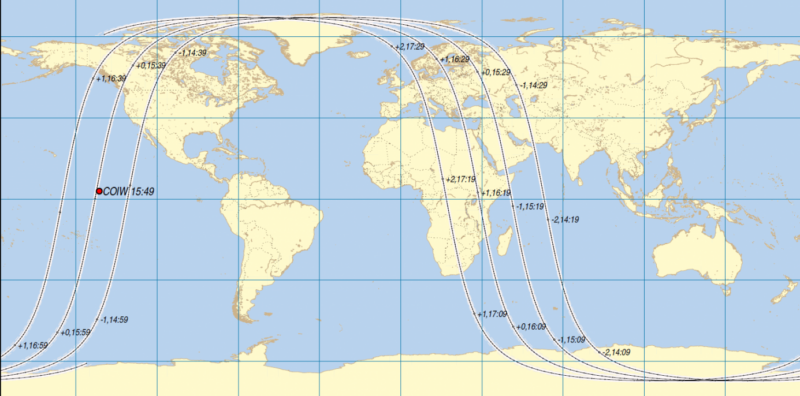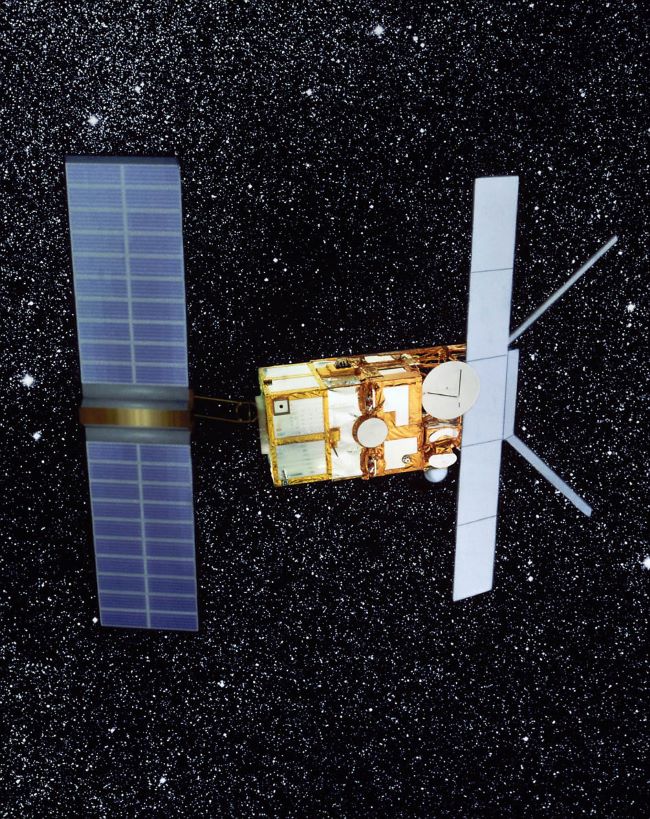UPDATE 19:30 UTC (20:30) CET
We have confirmation of the atmospheric reentry of ERS-2 at 17:17 UTC (18:17 CET) +/- 1 minute over the North Pacific Ocean between Alaska and Hawaii.
Coordinates: https://t.co/BNX4K1YxW2
— ESA Operations (@esaoperations) February 21, 2024
ERS-2 meets end over Pacific Ocean
The European Space Agency reported its dead ERS-2 satellite has fallen from the sky. It dropped into the atmosphere about 90 minutes after the estimated time of reentry somewhere over the Pacific Ocean. ESA marked the time of reentry as 11:17 a.m. Central Standard Time (17:17 UTC) on February 21. The falling satellite appears not to have caused any property damage, ESA said.
UPDATE 17:35 UTC (18:35 CET)
We have now reached the end of the final reentry window. We have received no new observations of ERS-2. This may mean that the satellite has already reentered, but we are waiting for information from our partners before we can confirm. Stay tuned.
— ESA Operations (@esaoperations) February 21, 2024
Dead satellite reentry window is over
A European Space Agency satellite – ERS-2 – was to reenter yesterday (February 21, 2024), it was an uncontrolled or “natural” reentry. Ultimately, the reentry window passed with no confirmation of the satellite’s reentry.
Accordingly, ESA said in a blog post updating reentry data:
The vast majority of the satellite will burn up, and any pieces that survive will be spread out somewhat randomly over a ground track on average hundreds of kilometers long and a few tens of kilometers wide (which is why the associated risks are very, very low).

Not a threat to humans
During a press conference on February 13, ESA said:
We estimate that the largest fragment of the satellite that could reach the ground is 115 pounds (52 kg).
But in addition, it also said:
The odds of a piece of satellite falling on someone’s head is estimated at one in a billion.
So, when you consider that 71% of Earth’s surface is water, odds are likely that the dead satellite made a big splash somewhere.

Satellite photo captured on descent
The Australian satellite imaging company HEO Robotics captured images of the doomed ERS-2 European Space Agency satellite. The pictures show a blurry satellite looking very much, in fact, like a TIE fighter from “Star Wars.” ESA said in a press release issued Monday, February 19, 2024:
The U.K. Space Agency recently worked with HEO to capture these images of ERS-2 during its descent. Using cameras on other satellites to image objects reentering the atmosphere is a relatively new approach.
In the future, these images may be used alongside data from ground-based sensors to refine reentry predictions.

What was ERS-2?
ERS-2 was ESA’s second European Remote Sensing satellite. Launched on April 21, 1995, the satellite had a 16-year career observing Earth until ESA retired it in 2011. Later, in July and August of that year, the space agency directed the satellite in 66 maneuvers to assist with deorbit. The maneuvers used up the satellite’s fuel in order to decrease its orbit and lessen its chance of hitting operational satellites. Additionally, lowering the satellite’s orbit also ensured that the satellite would reenter within the next 15 years, instead of 100 to 200 years. Also, by September 2011, all the fuel from ERS-2 was drained. After that, the spacecraft was inoperable.
Over the satellite’s lifetime, ERS-2 collected data on polar ice, changing land surfaces, sea-level rise, warming oceans and atmospheric chemistry. It was also pressed into service during natural disasters in remote regions. ESA said ERS-2:
… returned a wealth of information that revolutionized our perspective of our planet and understanding of climate change. As well as leaving a remarkable legacy of data that still continue to advance science, this outstanding mission set the stage for many of today’s satellites and ESA’s position at the forefront of Earth observation.
Dead satellite stats
ERS-2 weighed approximately 5,057 pounds (2294 kg). ESA said that:
On average, an object of similar mass reenters Earth’s atmosphere every week or two.
Previously, the space agency had said the satellite would begin to break up when it reached about 50 miles (80 km) above the ground. Indeed, most of the fragments would burn up completely in Earth’s atmosphere. As a result, the risk to humans was minute. According to ESA:
The annual risk of an individual human being injured by space debris is under 1 in 100 billion.
And, what does the burning spacecraft do to our atmosphere? ESA said:
… the short-term impact on the atmosphere due to the burn up of a single spacecraft is modest.
But, as ESA also said, an object this size reenters every week or two. And in October 2023, a team of scientists released a study that said:
… about 10% of the aerosol particles in the stratosphere contain aluminum and other metals that originated from the “burn-up” of satellites and rocket stages during reentry. Although direct health or environmental impacts at ground level are unlikely, these measurements have broad implications for the stratosphere and higher altitudes. With many more launches planned in the coming decades, metals from spacecraft reentry could induce changes in the stratospheric aerosol layer.
Just in from our colleagues at @esa's Earth Observation centre outside Rome: footage of the ERS-2 satellite passing over the area yesterday???
In the video you can see the fly-by in real speed and slowed down to a quarter of that speed (the satellite was in and out of the frame… pic.twitter.com/1fLqb4r2CC
— ESA Earth Observation (@ESA_EO) February 21, 2024
Bottom line: A dead satellite – ESA’s ERS-2 satellite – reentered Earth’s atmosphere yesterday. The entry was uncontrolled or “natural,” ESA said.











